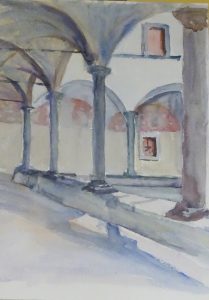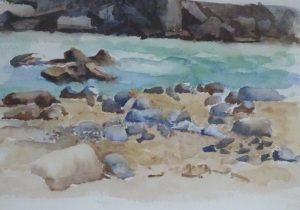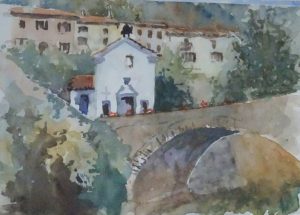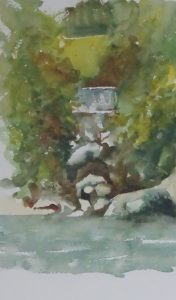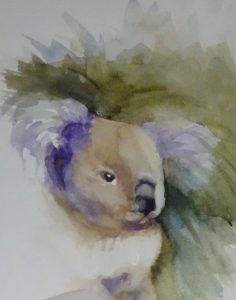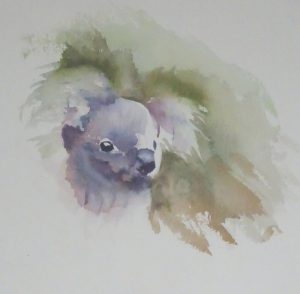We spent the day in a tiny hilltop village of Monte Bianchi. It’s very picturesque so the inhabitants are used to painters, and just carried on, greeting us pleasantly but incurious about our efforts. There were splendid views all round from both the grassy lawn in front of the church at one end of the village, and the modern hotel and restaurant at the other.
 Full of confidence, I went straight in with paint! It was such a simple view -the distant, tree-covered mountains covered with early morning mist, the grass green lawn with its little tree, then the pillar of the church porch. We were given 20 minutes to capture this view. There was a slender palm tree with a mop on top on the right hand side that would have balanced the composition , but time ran out.
Full of confidence, I went straight in with paint! It was such a simple view -the distant, tree-covered mountains covered with early morning mist, the grass green lawn with its little tree, then the pillar of the church porch. We were given 20 minutes to capture this view. There was a slender palm tree with a mop on top on the right hand side that would have balanced the composition , but time ran out.
We repaired to the restaurant where we well provided for, and sat in the shade finishing the carafe of wine. Perhaps that was an incautious thing to do, for we another painting to do, this time the view from the hotel terrace.
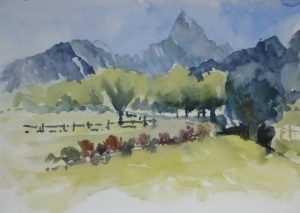 In view of what I have just said, you will understand that this is less than perfect. The mountains, the trees and the drive are OK, but that large dark green cotton wool ball on the right is not one of my most memorable paintings.
In view of what I have just said, you will understand that this is less than perfect. The mountains, the trees and the drive are OK, but that large dark green cotton wool ball on the right is not one of my most memorable paintings.
It was a splendid holiday and taught me much. I don’t think I’ll be going out painting as Autumn and Winter approach, but I’ll be out there come the Spring.

